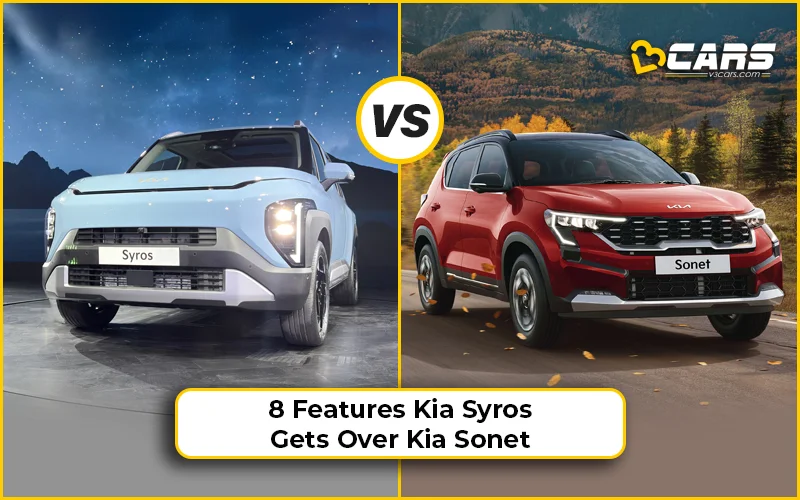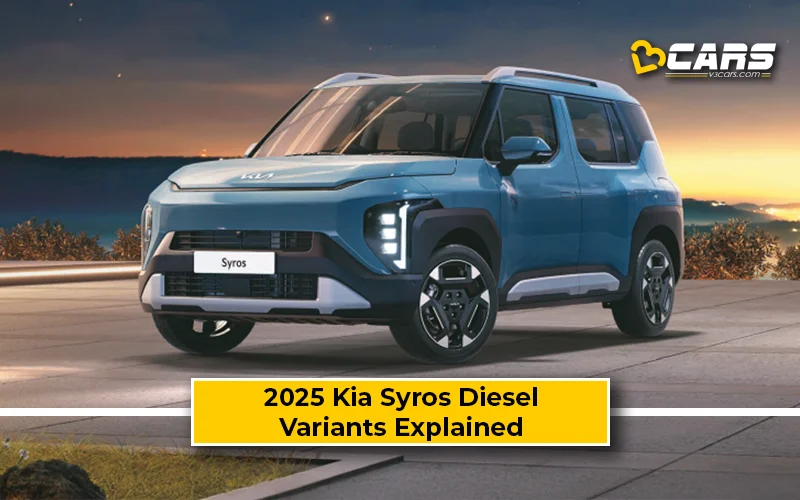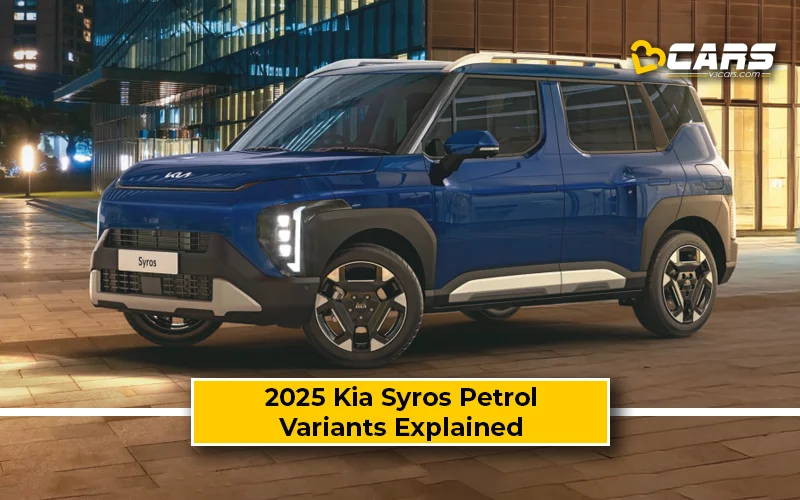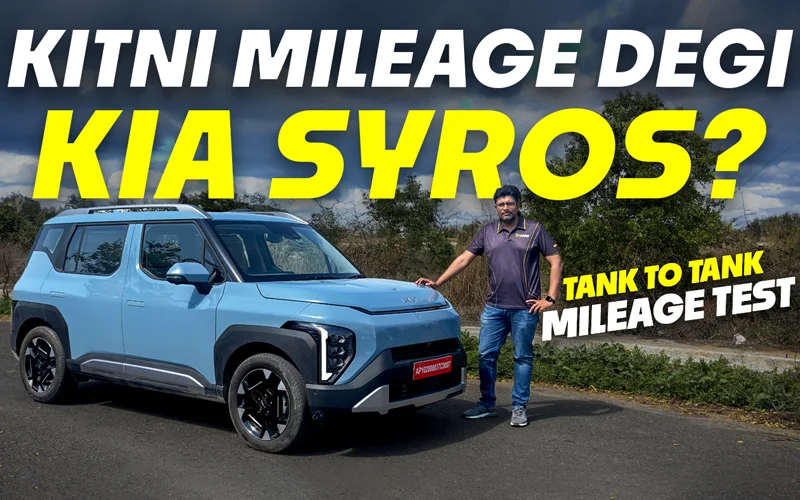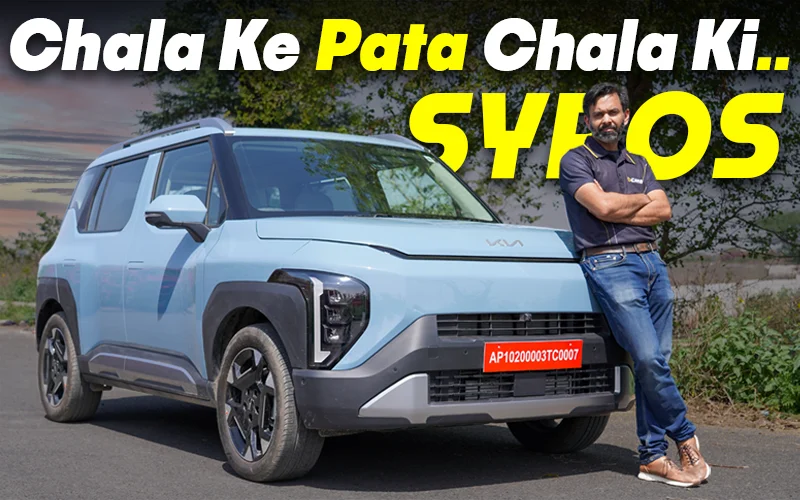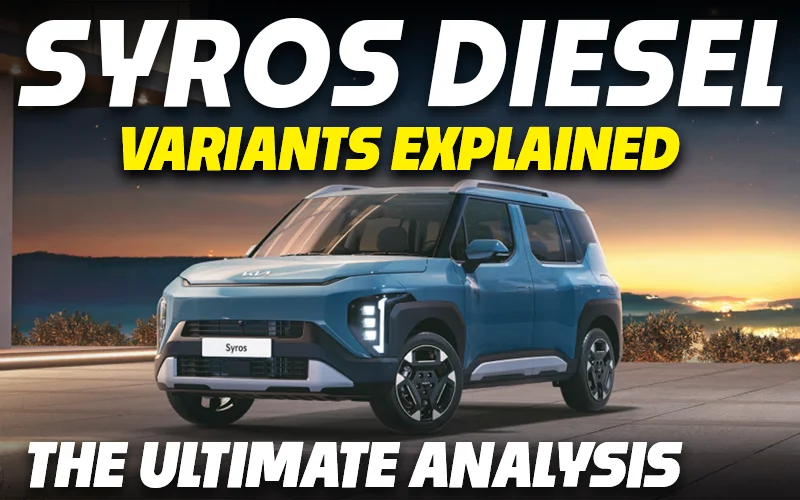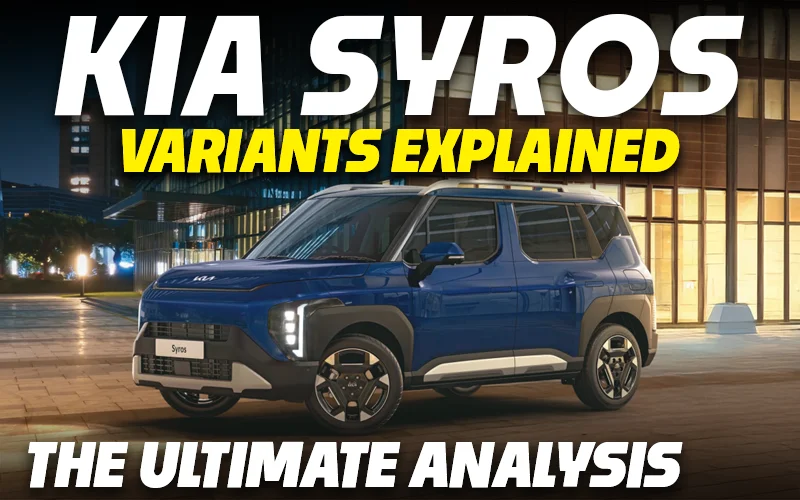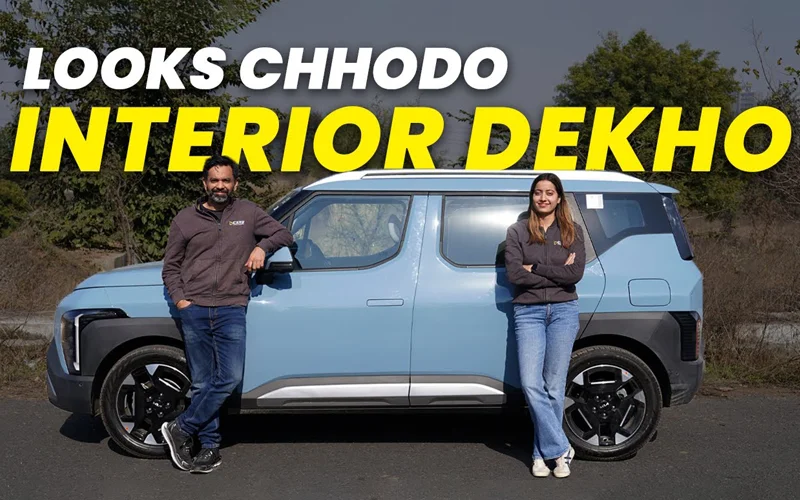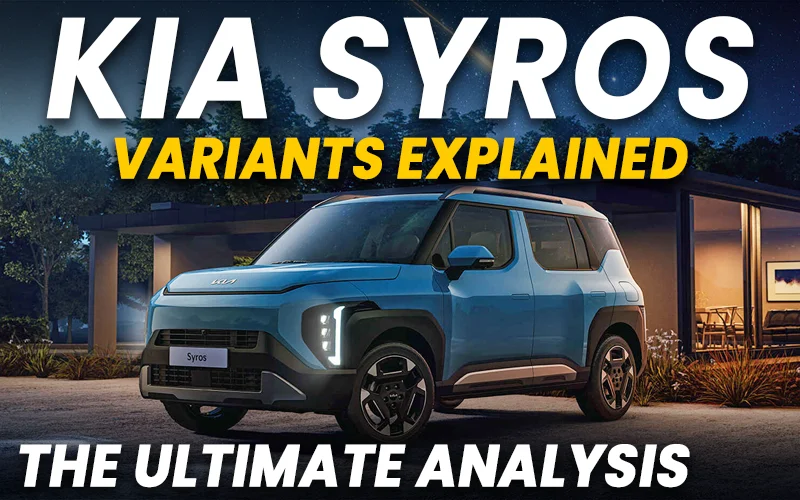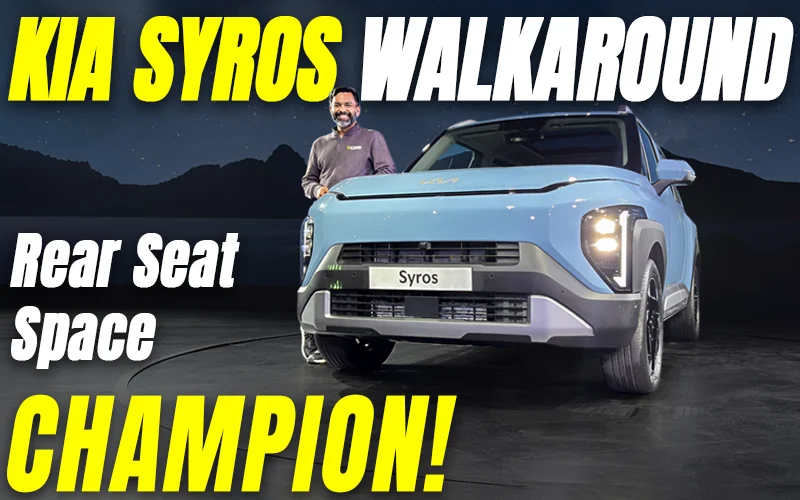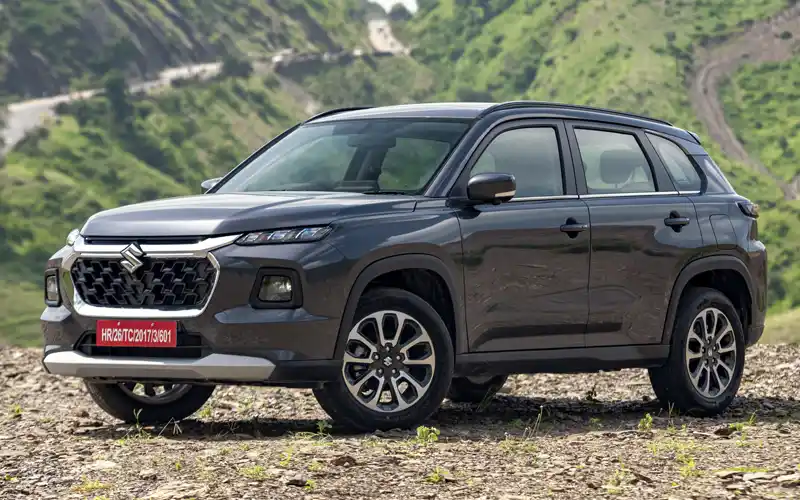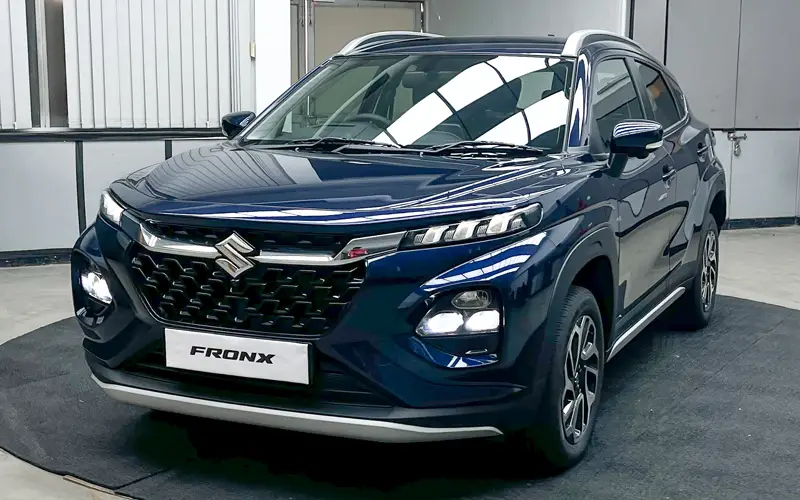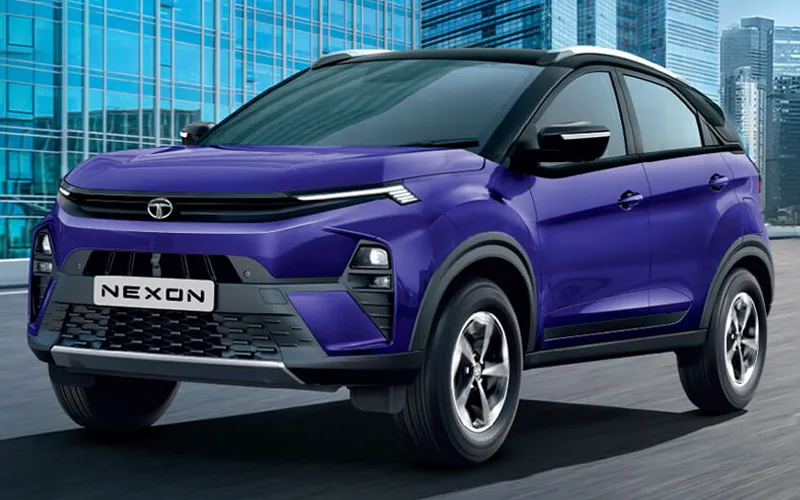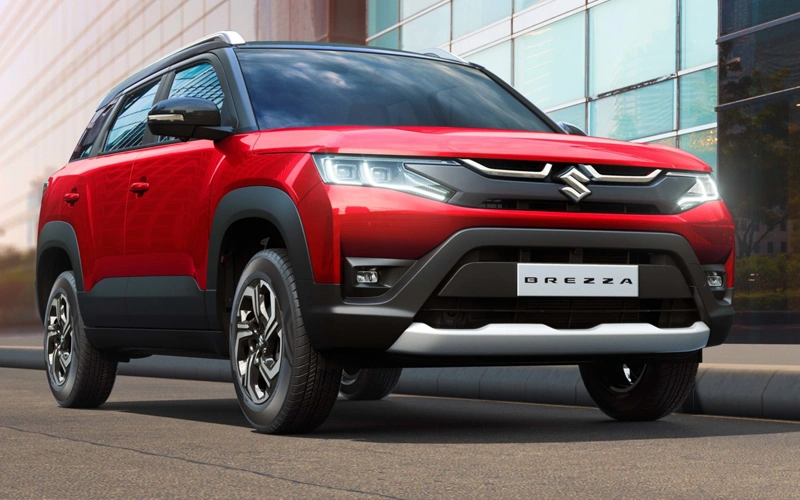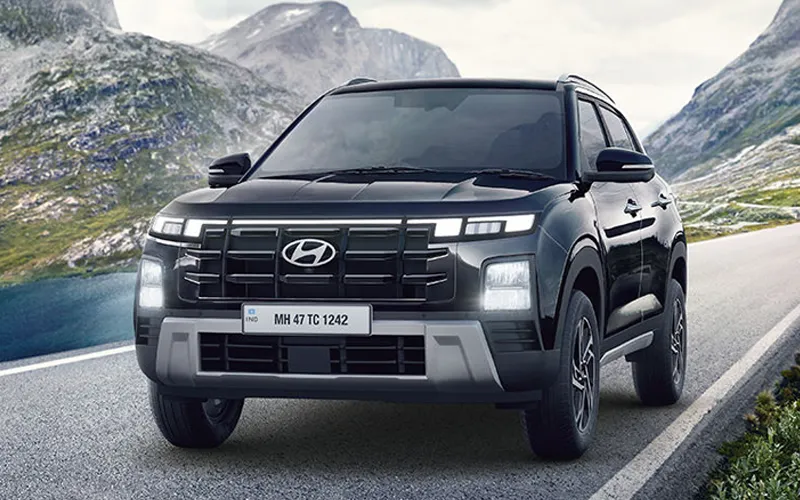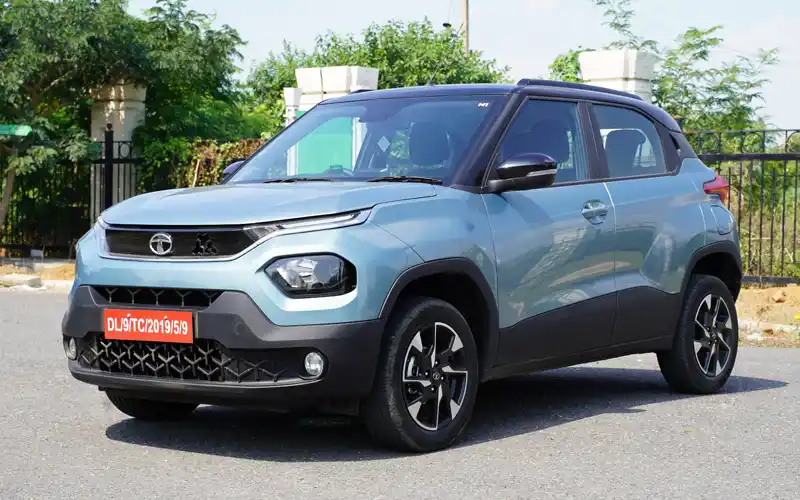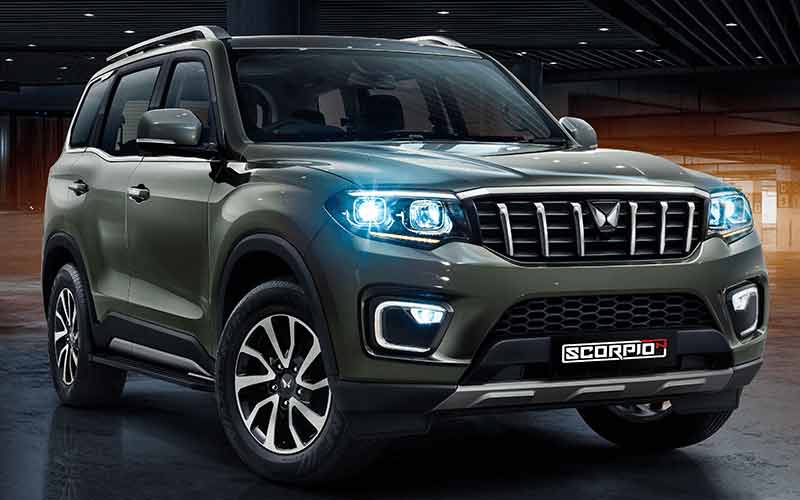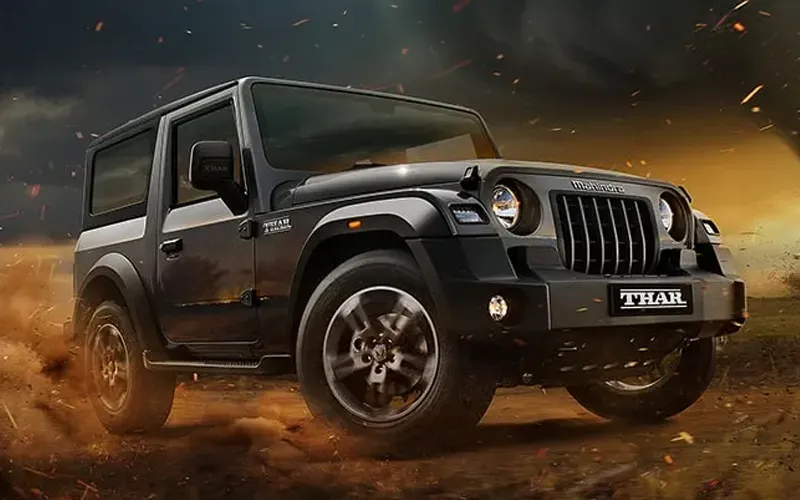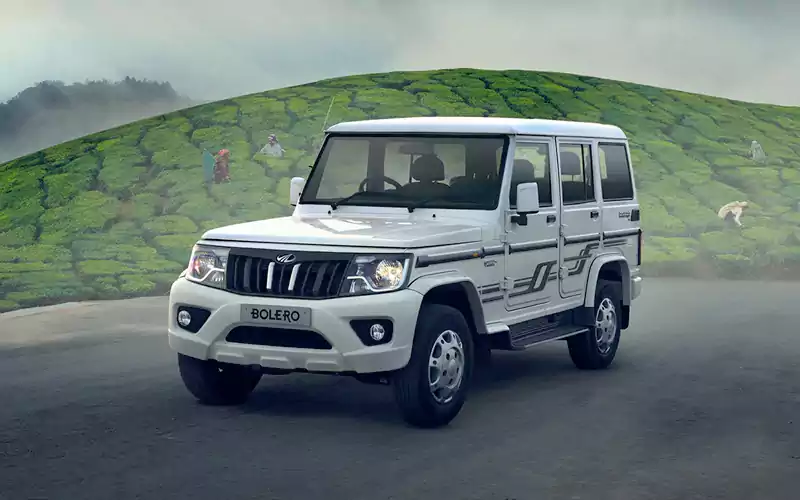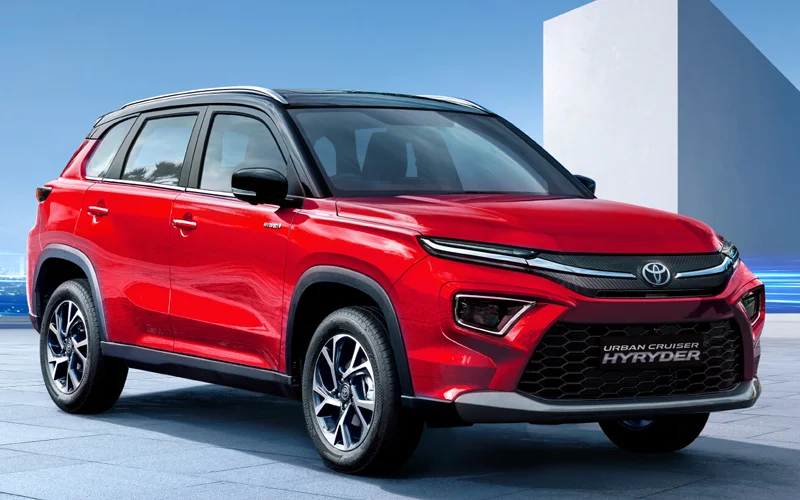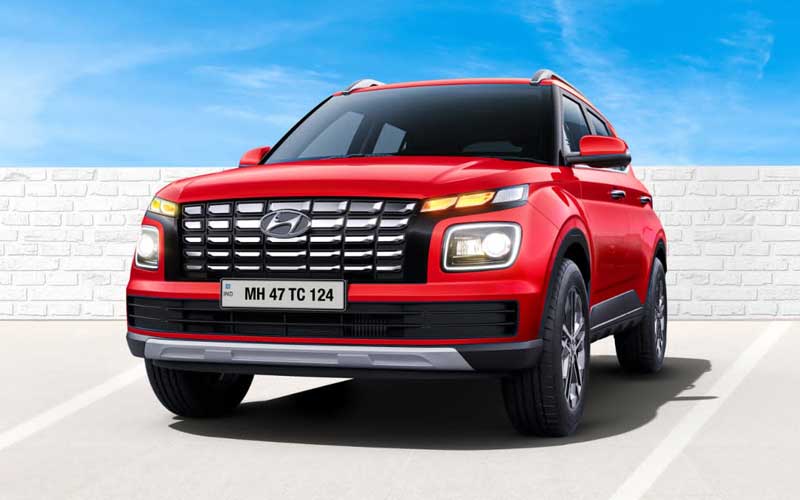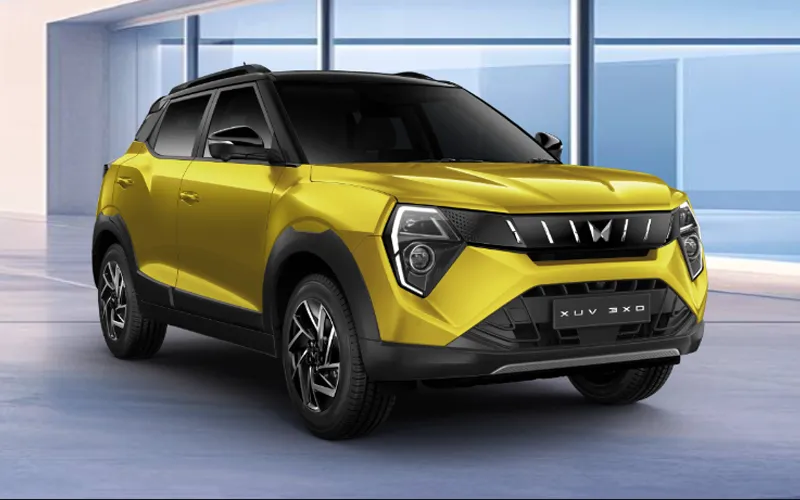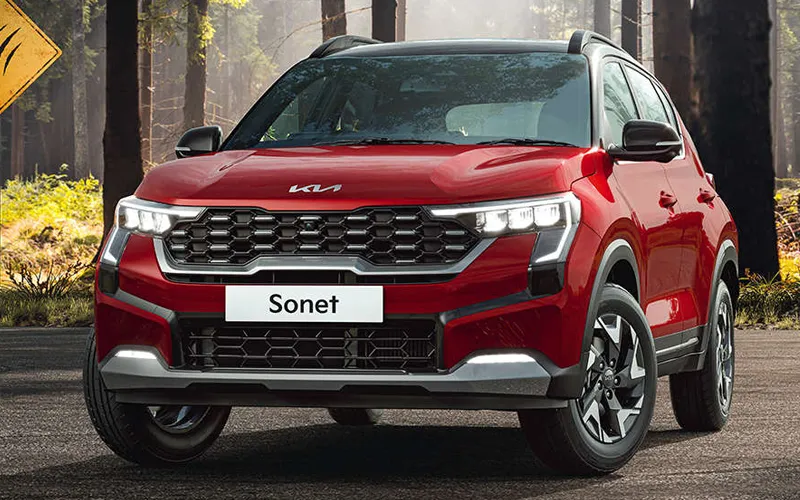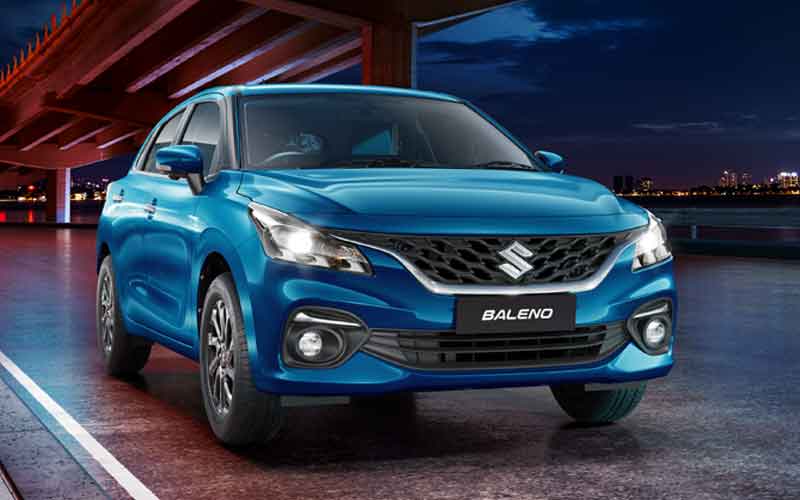Kia Syros Pros & Cons
Check out pros and cons about the Kia Syros that are worth highlighting for a potential buyer. Here are some of the highlights of the benefits of buying the Kia Syros. We'll also list out the Syros drawbacks to help you make an informed buying decision.
Syros Advantanges
-
5-Star Safety Rating (Adult & Child)
The Syros is the first Kia car in India to have the 5-star safety for child as well as adult safety. While it also has features such as ADAS, which prevent an accident in the first place, for what it’s worth, a 5-star rating gives an additional peace to the buyers. At least for the “5-star or bust” people in our circle, the Syros meets the baseline.
-
Stronger Road Presence Than A Typical Sub-4m SUV
The Syros has a design that will attract attention. It is too boxy with a face that looks quite a bit like an EV. The rear especially is pretty straight with barely any curves or character lines. Moreover, the Syros is quite wide. At 1805mm, it’s wider than the Sonet, Venue, Brezza, Fronx/Taisor, C3, Magnite, Kiger and even the Nexon (1mm). Only the 3XO is wider than the Syros by 1.6cm. In terms of height, it’s again taller than all other cars in its segment except the Brezza, which is 5mm taller.
Together, these attributes give it a great road presence and you’ll find it difficult to miss the car when you see it on the road.
-
Base Model Is Cheaper Than Venue Turbo, Sonet Turbo
Since the Kia Syros only comes with a turbo petrol engine, the base model ends up being cheaper than the Venue turbo and Sonet turbo. So, for those who are interested in either of those two cars and want the turbo petrol engine, the Syros is effectively the cheapest.
-
Top Model Offers Class-leading Set Of Features
The Syros top model brings a bunch of features such as the full ADAS suite, front and rear parking sensors (6 + 6), sliding and reclining rear seats, large 17-inch wheels, big panoramic sunroof, front seat full ventilation, rear seat base ventilation, 3 screen dashboard, power driver seat and 360-degree camera.
-
4 Competent Powertrain Options
The Koreans have shown that they don’t shy away from offering diesel engines and the Syros is no exception. The car brings petrol and diesel engine options, both with a manual and an automatic transmission option.
-
Respectable ARAI Mileage Figures
At least on paper, all 4 of those powertrain options offer respectable ARAI mileage figures. The petrol-manual is at 18.2kmpl while the automatic claims to deliver 17.68kmpl. The diesel engine promises 20.75kmpl with the manual and 17.65kmpl with the automatic. The torque converter type automatic transmission does eat into the FE figure a bit for the diesel engine.
-
Meets A Niche Buyer’s Needs Impeccably Well
The Syros ends up meeting the needs of a small number of buyers so well that there’s nothing else like it and we probably will never again have something like it. For those with expensive luxury cars at home, who want a compact car for the city or for the kids, the Syros fits the bill quite well.
But, that’s not all. <Warning: Long Sentence Ahead.>
If, say, such buyers want a car that not only meets those needs but it should be stylish enough to make a statement, feels rich enough that they don’t feel like they’re all of a sudden sitting in a cheap car, should be spacious and feature rich for the rear seat occupants so they can be chauffeur-driven in it but still enjoyable enough that they wouldn’t mind driving it and being seen driving it.
Since these buyers are not price sensitive, the high price of the higher variants doesn’t even work against the Syros. Bring all of these attributes together and you end up with a car that fits the bill like nothing else, if only for a tiny set of buyers.
Syros Disadvantanges
-
Pathetic Real-world Mileage w/ Petrol-Auto
While we have only tested the petrol-DCT automatic powertrain, it was interesting to see that the Syros achieved a real-world mileage of only 8.5kmpl in our city driving test. This is 52% lower than the claimed figure.
On the highways, it achieved 13.65kmpl, which is better but still almost 23% less than the claimed mileage figure. This is the highest deviation from ARAl mileage figures that we have recorded for the highway mileage test ever.
It’s worth noting that some cars end up exceeding the ARAI mileage figure at least in the highway tests. For instance, the Hyryder 4WD and Honda Elevate achieved around 5% better mileage in our highway test runs. The Syros falling short by a huge margin is a cause for concern.
This begs the question: how much worse are the diesel-manual and diesel-automatic powertrains in terms of real-world mileage?
-
DCT Autos Are Yet To Prove Long Term Reliability
We all remember the DCT cars that were on sale and then discontinued by their respective manufacturers. At least among the mass-market cars, the carmakers realised that it’s difficult to make a DCT that’s as reliable as the demanding mass market buyer expects it to be. The Hector & Hector Plus, Figo, Aspire & Ecosport and a bunch of Skoda and VW cars with a DCT transmission eventually ended up leaving our country. They were either replaced by other transmission options or just went out of production near the end of life.
As far as the Korean DCTs are concerned, they haven’t been around long enough to suggest that they can be long-term reliable partners. The first batches of cars with this DCT automatic are only beginning to come out of warranty and we ought to give them some more time to find out how reliably they perform without the cover of free repair from the manufacturer.
-
TC Autos Are Inefficient In Stop-&-Go Traffic
Torque converter automatic transmission has one big problem: fluid coupling. While it makes the transitions smooth in stop-and-go traffic, this also becomes their pain point. Since the impeller blades keep spinning around in fairly viscous oil, this ends up consuming a lot of fuel, especially while you are stuck in traffic. Their fuel consumption at idle while the car is in gear is just through the roof.
While it is quite reliable for general use, they weren’t designed for Indian traffic conditions. Most of us buy an automatic because we don’t want to keep shifting between Neutral, 1st and 2nd gears. And this is exactly where they end up guzzling fuel like crazy.
-
Higher Trims Are Obscenely Overpriced
With the Syros top model diesel-automatic stretching up to Rs. 17.80 lakh (ex-showroom), it does come across as insanely overpriced, for what is essentially a sub-4m monocoque hatchback on steroids. The XUV3XO is its closest rival in terms of performance, road presence and features. Let’s say the 3XO diesel top model came with an expensive automatic (TC, DCT, CVT). Even then, it wouldn’t cost more than Rs. 16.60 lakh (ex-sh).
Say, you add some 40k for the extra features of the Syros, you ought to also deduct some 50k for having a design that doesn't have mass appeal. That brings us to an upper limit of Rs. 16.50 lakh (ex-sh), which is the absolute top for the Syros diesel top model considering the VFM angle.
The whole package seems quite difficult to justify for a mass market buyer while it makes perfect sense for a small number of buyers whose needs we have outlined in the ‘Pros’ section above.
-
Weird Design Is Going To Polarise Opinions
The front of the Syros looks odd with a large slab of body coloured panel, which seems to suggest that it’s an EV. The rear cut has barely any curves or character lines to speak of. In fact, it appears to be chopped off abruptly with a wall like design. While it’s understandable that this is done to meet India's absurd 4m rules, for the end consumer, this makes the rear bumper extremely ineffective in its ability to satisfactorily do its job.
-
Horrible Feature Distribution For A Korean Brand Car
One may even look past its “big-boxy-WagonR” looks if it offered something that wasn’t available in most other cars. In the case of Syros, that is the rear seat slide and recline feature. Unfortunately, that isn’t available as standard with all variants.
The lower two variants end up with only the turbo petrol engine, a boxy design with limited mass appeal and several missing features such as LED headlamps, rear parcel tray, split rear seat backs, rear armrest and cruise control.
Even when you stretch your budget a bit to accommodate the most affordable variant with sliding and reclining features, you have to live with an incomplete exterior styling that’s more like the base model. You still don’t get the LED headlamps and LED DRLs in the HTK Plus variant, it’s going to look cheap.
To add salt to injuries, the HTK Plus variant does come with a panoramic sunroof but lacks functional features such as auto AC or ventilated seats. Since the Syros appears to be aimed squarely at the rational and analytical buyers, who value functional features more than others, such poor feature distribution comes across as quite predatory and so unlike Kia and it reminds me of the Tata cars from just a few years ago.
If you want to see what outstanding feature distribution, consider checking out the Nios, Tiago, Tigor and Punch. In the recent months, Tata have worked very hard to address this issue and now, at least in terms of feature distribution, their cars simultaneously appeal to the head and heart. Check out the variants explained articles of these cars to see what we are trying to say here and give special attention to the additional features of each variant over the lower trims.
-
Slide, Recline Isn’t A Big Deal At This Price Point
Let’s say that you were buying the Syros for the rear seat slide and recline feature. There are cheaper cars such as the Triber, Ertiga, XL6 and Carens that offer this feature, although they wear the MPV top layer. With a bit less MPV styling, you have the MG Windsor, which has such a long wheelbase that it doesn’t need a sliding feature in the first place. Meanwhile, reclining is available as standard with a starting price of Rs. 14.0 lakh. Not to mention, it’s much bigger than the Syros with functional front and rear bumpers.
If you want the SUV styling, then the Maruti E Vitara will come at around the same price as the top model Syros and it’ll also bring slide-and-recline features as standard. With an estimated starting price of Rs. 18.0 lakh, it does come across as a competent alternative. Being an EV, it has the potential to save you a bunch of cash during the ownership. Although, since it’s an EV, it will eat up into your mind space as you’ll have to plan your charging sessions.
-
Diesel Carries A Substantial Premium Over Petrol
Since the petrol engine also comes with a turbo charger and an intercooler, the diesel engine doesn’t add much in terms of manufacturing costs. So, a 50k to 70k premium over the comparable turbo petrol variant should be enough to sell it at similar profit margins. This is not an absurd expectation since Kia normally do this with the Sonet. In fact, with the Seltos and the Carens, the premium for the diesel over turbo petrol is between non-existent and negligible.
Hence, the flat Rs. 1.0 lakh premium for the diesel over turbo petrol options seems quite expensive.
-
Heavy Product Overlap w/ Sonet, Seltos & Carens
Speaking of other Kia cars, the Syros creates massive overlaps with all other Kia cars — none of the other 3 Kia cars look as weird as the Syros. Despite a huge tax disadvantage, the Seltos and Carens even come across as surprisingly value for money compared to the Syros. The size alone may be enough for some buyers to consider the larger cars with a more conservative styling.
-
Limited Variant-Powertrains Options
Perhaps Kia are aware of the high premium the Syros diesel powertrains carry over petrol. Hence they might be anticipating limited demand for the diesel variants. This limits the variant options for Syros diesel buyers. Diesel-manual isn’t available in the base model. The diesel automatic is only reserved for the top two variants with ADAS. And, manual transmission isn’t even an option in the top two trims.
Things aren’t all that pretty in the petrol land either. Thankfully, the most affordable petrol-automatic powertrain is available in our top recommended variant. But other than that, there's not much to rejoice about. Petrol manual isn’t available in the top two variants, which means ADAS features aren’t available with manual transmission at all. The base model with an automatic could have very well been launched at Rs. 9.99 lakh but they didn’t.
-
Some Missing Features Even At This Price Point
Even with a high price tag, which reflects arrogance on Kia’s part, there are a couple of missing features. While we wouldn’t mind it with most other cars, the asking price compels us to bring these out in the open. Firstly, it doesn’t get auto folding outside mirrors and tilt steering even in the top model with an asking price of Rs. 17.80 lakh (ex-sh).
-
5-Star Safety Rating Has Become Quite Common
While it is a good thing to have in a car, it’s no longer an achievement. These days, even cars like the Maruti Dzire have this feature. When the (unofficial) national taxi of India has this feature, a 5-star safety rating no longer brings with it the bragging rights that it used to half a decade ago.
Kia Syros Expert Reviews
10 Features New Kia Syros Gets Over Kia Sonet
Kia unveiled their all-new B2-segment SUV, the 2025 Syros, on December 19, 2024. While Kia...

